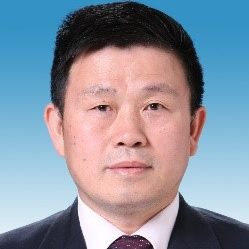Heavy Metal Pollution and Remediation of Agricultural Soils
A special issue of Sustainability (ISSN 2071-1050). This special issue belongs to the section "Sustainable Agriculture".
Deadline for manuscript submissions: closed (15 September 2022) | Viewed by 13625
Special Issue Editors
Interests: mechanism of transfer and translocation of metals in the soil–plant system; ecological risk of heavy metals in polluted soil; environmental thresholds of heavy metals in soils
Special Issues, Collections and Topics in MDPI journals
Interests: heavy metal uptake, translocation and accumulation in the soil–plant system; ecological risk assessment and remediation of contaminated agricultural soils
Special Issues, Collections and Topics in MDPI journals
Special Issue Information
Dear Colleagues,
Unlike organic contaminants, most heavy metals do not undergo microbial or chemical degradation, and the total concentration of inorganic metals in soils persists for a long time after their introduction. After heavy metals enter the soil, they may cause potential harm to human health through the food chain. Therefore, with great public awareness of the implications of contaminated soils by metals on human and animal health, there has been increasing interest in the occurrence and characteristics of soil heavy metals, and the development of technologies to remediate contaminated lands.
Being aware of the importance of soil sustainability, we are pleased to announce the launch of a new Special Issue with the theme of “Heavy Metal Pollution and Remediation of Agricultural Soils”. The topics of interest include the following scientific issues:
1) Source, processes, and health risk of heavy metals in soil–plant ecosystems;
2) Behavior, fate, bioavailability, and effects of heavy metals in the soil environment;
3) Heavy metal uptake, translocation, and accumulation in soil–plant systems;
4) Mitigation measures and regulations of heavy metals in agro-soil contaminations.
Hence, this Special Issue titled “Heavy Metal Pollution and Remediation of Agricultural Soils” of Sustainability invites the submission of papers on the above areas from leading experts from various disciplines to share recent knowledge on theoretical foundations and practical remediation strategies for the cleanup of contaminated agricultural soils, ultimately in order to improve the quality of our ambient environment, and to save our Earth.
Prof. Dr. Shibao Chen
Dr. Meng Wang
Guest Editors
Manuscript Submission Information
Manuscripts should be submitted online at www.mdpi.com by registering and logging in to this website. Once you are registered, click here to go to the submission form. Manuscripts can be submitted until the deadline. All submissions that pass pre-check are peer-reviewed. Accepted papers will be published continuously in the journal (as soon as accepted) and will be listed together on the special issue website. Research articles, review articles as well as short communications are invited. For planned papers, a title and short abstract (about 100 words) can be sent to the Editorial Office for announcement on this website.
Submitted manuscripts should not have been published previously, nor be under consideration for publication elsewhere (except conference proceedings papers). All manuscripts are thoroughly refereed through a single-blind peer-review process. A guide for authors and other relevant information for submission of manuscripts is available on the Instructions for Authors page. Sustainability is an international peer-reviewed open access semimonthly journal published by MDPI.
Please visit the Instructions for Authors page before submitting a manuscript. The Article Processing Charge (APC) for publication in this open access journal is 2400 CHF (Swiss Francs). Submitted papers should be well formatted and use good English. Authors may use MDPI's English editing service prior to publication or during author revisions.
Keywords
- cadmium
- arsenic
- lead
- chromium
- mercury
- soil pollution
- agronomy
- soil remediation
- ecotoxicology
- biogeochemistry






